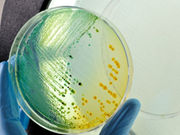Tougher poultry regulations may explain 18 percent decline in food poisonings from Salmonella
THURSDAY, April 20, 2017 (HealthDay News) — U.S. health officials have made progress against Salmonella infections, according to research published in the April 21 issue of the U.S. Centers for Disease Control and Prevention’s Morbidity and Mortality Weekly Report.
In 2016, there was an 18 percent drop in illnesses caused by Salmonella, according to the report. Tougher regulations and more vaccinations of chickens most likely explain the decrease, the researchers said. Still, most of the reported bacterial foodborne illnesses in the United States in 2016 were caused by Campylobacter bacteria and Salmonella. In total, FoodNet sites reported 24,029 foodborne infections, 5,512 hospitalizations, and 98 deaths.
The numbers of reported foodborne illnesses caused by specific germs were: Campylobacter (8,547); Salmonella (8,172); Shigella (2,913); Shiga toxin-producing Escherichia coli (1,845); Cryptosporidium (1,816); Yersinia (302); Vibrio (252); Listeria (127); and Cyclospora (55).
While Salmonella infections decreased, reported Yersinia, Cryptosporidium, and Shiga toxin-producing E. coli infections increased, the researchers found. That was likely due to new rapid tests that make these infections easier to diagnose, rather than an actual increase in illnesses caused by these germs, the researchers noted.
Copyright © 2017 HealthDay. All rights reserved.








